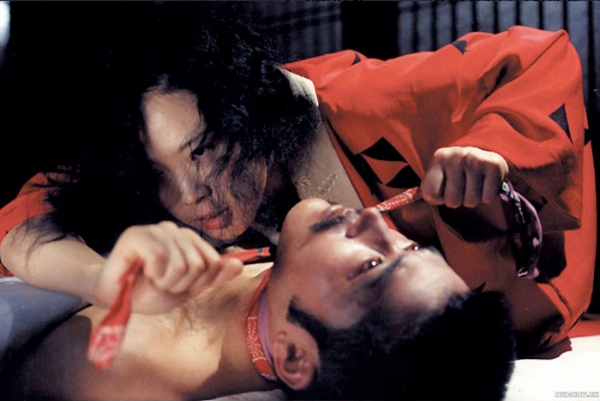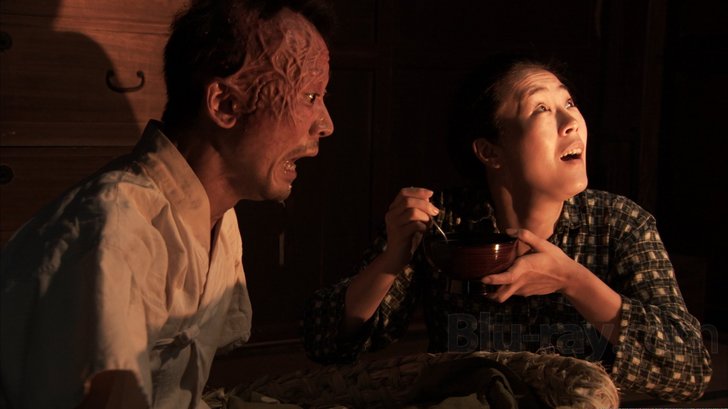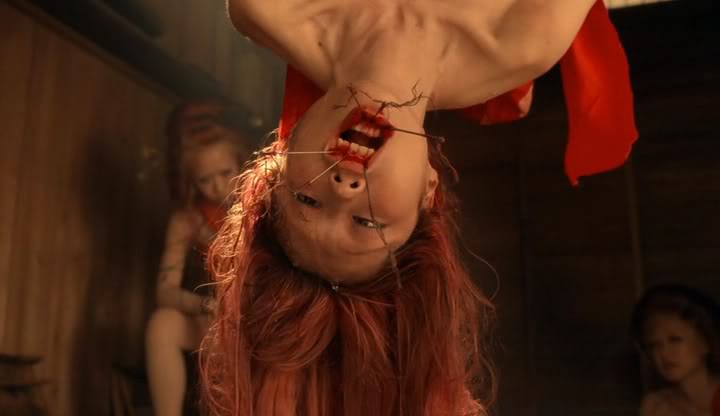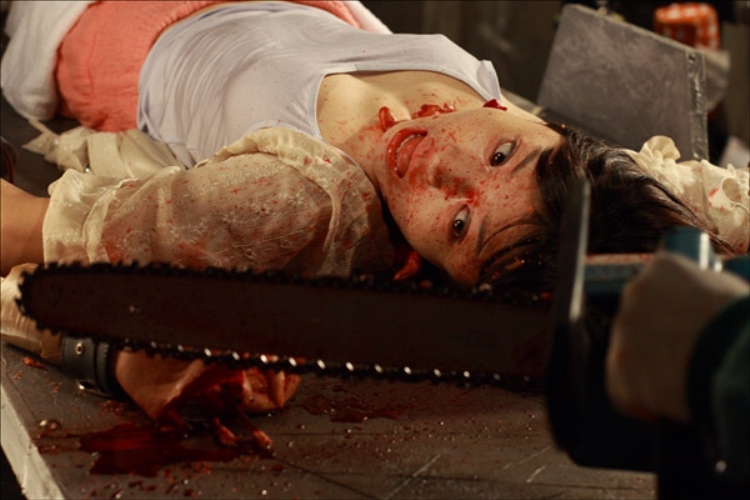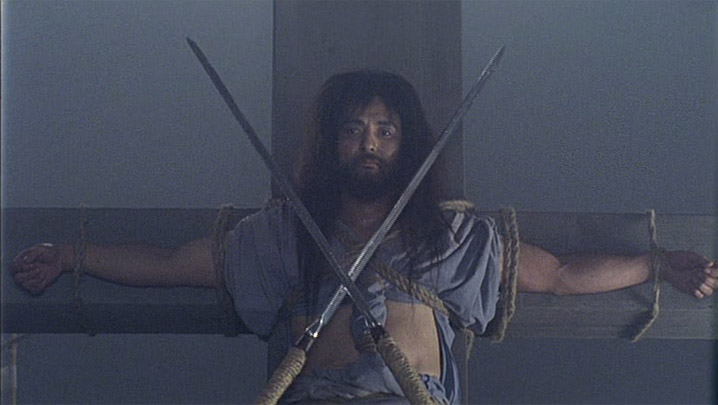Asian cinema has entailed extreme films, almost since its conception, incorporating themes and concepts that, at least to the eyes of individuals in the West, seem improbable. Japanese filmmakers are the definite masters of the style, mainly due to notions resulting from the atomic bomb. However, there is representation in the field from Korea and Hong Kong as well.
Expectantly, a number of the older films may not seem extreme today. Nevertheless, at the time of their release, they were considered shocking. The following list includes 25 of the foremost extreme movies ever made in Asia and probably in the rest of the world.
1. Onibaba (Kaneto Shindo, 1964, Japan)
In 14th century Japan, a man is forced to enlist the army, leaving his wife and his mother alone in their house in the swamp. In order to survive, the women ambushes passing soldiers, kills them and subsequently sells their belongings to a greedy merchant. Nevertheless, the wife initiates an affair with a deserter, enraging her mother-in-law who no longer trusts her.
Additionally, the mother tends to wear a mask stolen from a butchered samurai. However, inside the mask resides a demon, which eventually takes over.
Kaneto Shindo shoots the film exclusively in a swamp, where the protagonists live their own hell. Water, canes and mud constitute an environment that, when combined with the black and white cinematography and the long, internal pauses results in a silent nightmare. Shindo presents a movie concerning the worse of human instincts and an apparent message: the sole hell is the one human beings live in.
The violence, the sex scenes and the concept in general were unheard of in the 1960s. Consequently, Shindo was forced to introduce his own production company in order to shoot and screen it. Initially, British authorities refused to screen it in the UK; however, an expurgated edition was eventually released. Nevertheless, “Onibaba” was a commercial success and one of the foremost renowned titles of the prolific director.
2. Ichi the Killer (Takashi Miike, 2001, Japan)
It would not be a complete list without titles from one of the masters of the extreme. Furthermore, Takashi Miike has largely based his filmography on the exploration of humans’ darkest instincts and the graphic depiction of violence resulting from them. “Ichi the Killer” is a characteristic sample.
Revolving around a psychotic, extremely brutal killer and a sadomasochistic Yakuza underboss, “Ichi the Killer” is one of the foremost violent films ever shot. Miike presents a movie where good, as a concept, is absent and every character seems to be paranoid. His aim is evident from the beginning of the movie; violence is not simply a factor, it is the sole and ultimate goal.
Additionally, a plethora of scenes that other filmmakers would not even dream of depicting are present here, including mutilations, raping women to death, even murdered children. Miike accomplished these to create a true ode to violence.
A number of censorship committees either heavily expurgated the movie or banned it completely, namely Norway, which forbids showing, distributing and even owning it.
3. Emperor Tomato Ketchup (Shuji Terayama, 1971, Japan)
Shuji Terayama, who was also a stage writer and a poet, is considered the leading representative of avant-garde in Japan. His works were always provocative and against all taboo, and “Emperor Tomato Ketchup” is a distinctive sample of the fact.
Set in a Japan where children have gained control, the film depicts a variety of scenes, unprecedented in their extremity at the time, including children’s nude and erotic scenes and offspring humiliating their parents.
Being evidently low budget, the movie is shot in black and white and entails an abstract narrative, thus making it tough to watch, especially in its unedited form that lasts 75 minutes.
However, underneath its extreme depictions and surrealism, Terayama hides a satire regarding politics and sex and the results of their interaction.
Due to heavy censorship in Japan, the film was initially released as a 27 minute short, with the original cut eventually screened in 1993, 13 years after Terayama’s death.
4. Caterpillar (Koji Wakamatasu, 2010, Japan)
Another filmmaker that could not be absent from this list is Koji Wakamatsu, one of the earliest apostles of the extreme in Japan. The particular film is one of his last works since he died in 2012. However, his distinct morbidity did not seem to have abandoned him even in his final years.
The story is loosely based on a novel written by Edokawa Rampo, initially published in 1929, whose reprint was permanently forbidden in 1939. At the end of 1930, before the end of the Japan-China war, First Lieutenant Kyuzo Kurokawa returns home from the front in an awful condition. Both his legs and hands are mutilated, he has lost his hearing, and he has severe burns on the right side of his head. However, his country has decorated him three times for his bravery, even naming him “God of War”.
His relatives are shocked by his condition; nevertheless, they attempt, hypocritically, to persuade his wife, Shigeko that it is an honor taking care of such an eminent man. On the other hand, she manages to overcome her own shock quite rapidly. However, this does not last for long, since she quickly realizes that not only does she have to tend to all of the family’s work, both in the house and in the field, she also has to satisfy Kyuzo’s biological needs that incorporate his insatiable thirst for sex.
Wakamatsu presents a number of preposterous sex scenes between the protagonists, which are as shocking as Kyuzo’s image. The title literally refers to his condition, since he does not have hands or legs, thus resembling a caterpillar.
Nevertheless, the film incorporates a sharp political remark regarding Japan at the time, and the public’s perception of the empire that amounted to blind obedience. His biggest achievement here lies in the fact that he manages to retain the balance between the drama, the political comment and the satire, throughout a plethora of grotesque scenes.
Shinobu Terajima is sublime as Shigeko, presenting virtually every aspect of human behavior with utmost realism.
5. Breathless (Ik Joon Yang, 2010, S. Korea)
Sang Hoon is a low-level gangster, working for a loan shark who happens to be his sole friend. His job chiefly incorporates searching for individuals who owe money and subsequently, violently forcing them to pay. Usually, a young man from the syndicate accompanies him, seemingly to train in the field but actually for Sang Hoon to treat as a punching bag, constantly cursing and hitting him.
However, underneath his violent façade resides a tragic story. His cruel father, who regularly rampaged on his family, eventually killed his wife in an incident that landed him in prison and Sang Hoon in the hospital. When he is released, he returns to his home with Sang Hoon, who, not being able to forget, wreaks his fury upon him, beating him every time he gets drunk.
The only people Sang Hoon seems to tend to are his sister, his nephew and subsequently a schoolgirl, with the two of them striking a peculiar friendship.
Ik Joon Yang directed, wrote the script, and played Sang Hoon, in a movie that is mostly autobiographical. His primary purpose is to delve into the concept of domestic violence, and he accomplishes that by depicting it without constraints regarding the abuse it incorporates, both physically and verbally. The outcome is grotesque as much as it is realistic. His message is clear: the cycle of domestic violence is almost impossible to end.
What makes “Breathless” additionally extreme is that in the overwhelming majority of its duration, violence is present, not only from the protagonist, who seems to stop cursing solely when he is beating someone, but also from parents toward their children.
6. Imprint (Takashi Miike, 2006, Japan)
The producers of the TV series “Masters of Horror”, an anthology shot by various directors, chose Miike to direct an episode. However, given the artistic freedom they allowed him, the result was literally a given. “Imprint” was violent enough for the people at Showtime to refuse broadcasting it.
In 19th century Japan, an American journalist searches for his lost love, a woman he abandoned despite his promises. His investigation leads him to a secluded island, where a prostitute informs him that his loved one is deceased. Subsequently, she begins describing the life of the girl, a dramatic story of torture and hidden secrets.
Miike presents a grotesque edition of Japanese folklore and a love story that transforms into something irrational and evil. Moreover, what make “Imprint” so difficult to watch are the exceedingly graphic torture scenes that leave nothing to the imagination. Nevertheless, beyond the violence lies a technically accomplished film, whose visuals excel chiefly due to the phantasmagoric costumes and the cinematography that create a genuinely horrific atmosphere.
7. Grotesque (Koji Shiraishi, 2009, Japan)
A paranoid sadistic doctor drugs and kidnaps a couple during their first date. When they wake up, he begins torturing them for several days and that is actually the gist of the script of “Grotesque”, which Koji Shiraishi also pens.
His sole and obvious purpose here is to depict violence through torture as graphically as possible, thus creating a movie extremely onerous to watch, even by hardcore fans of the splatter genre. Evidently, he succeeded.
The British Board of Film Classification refused to release it in the UK, a decision that subsequently drove Amazon to remove the DVD from its website. Shiraishi responded that he was delighted, since his purpose was to upset the so-called moralists.
“Grotesque” is the utmost torture movie and a true ode to violence.
8. Izo (Takashi Miike, 2004, Japan)
In this film, Izo was captured and subsequently crucified in 1865; however, he returns to present-day Tokyo, where he roams the streets since he is homeless. Nevertheless, he soon transforms into a killing machine, seeking revenge for his past, in order for his soul to finally rest.
“Izo” is Miike’s own ode to violence, since it does not incorporate any type of plot, just the protagonist passing through levels of hell, spreading havoc. The desecrating camera follows the samurai indiscriminately killing warriors, bodyguards, politicians, the elderly, prostitutes, mothers, female teachers, and even children. In the brief intervals between the murders, an insidious guitar player gives a number of intricate solos that literally intensify the violence.
Miike initiates the bloodbath from the beginning of this film and never seems to cease it. The prominent cast of “Izo” includes Takeshi Kitano, Ryuhei Matsuda, Renji Ishibashi, Yuya Ichida, Susumu Terajima, Ken Ogata, and famous American wrestler Bob Sapp.
